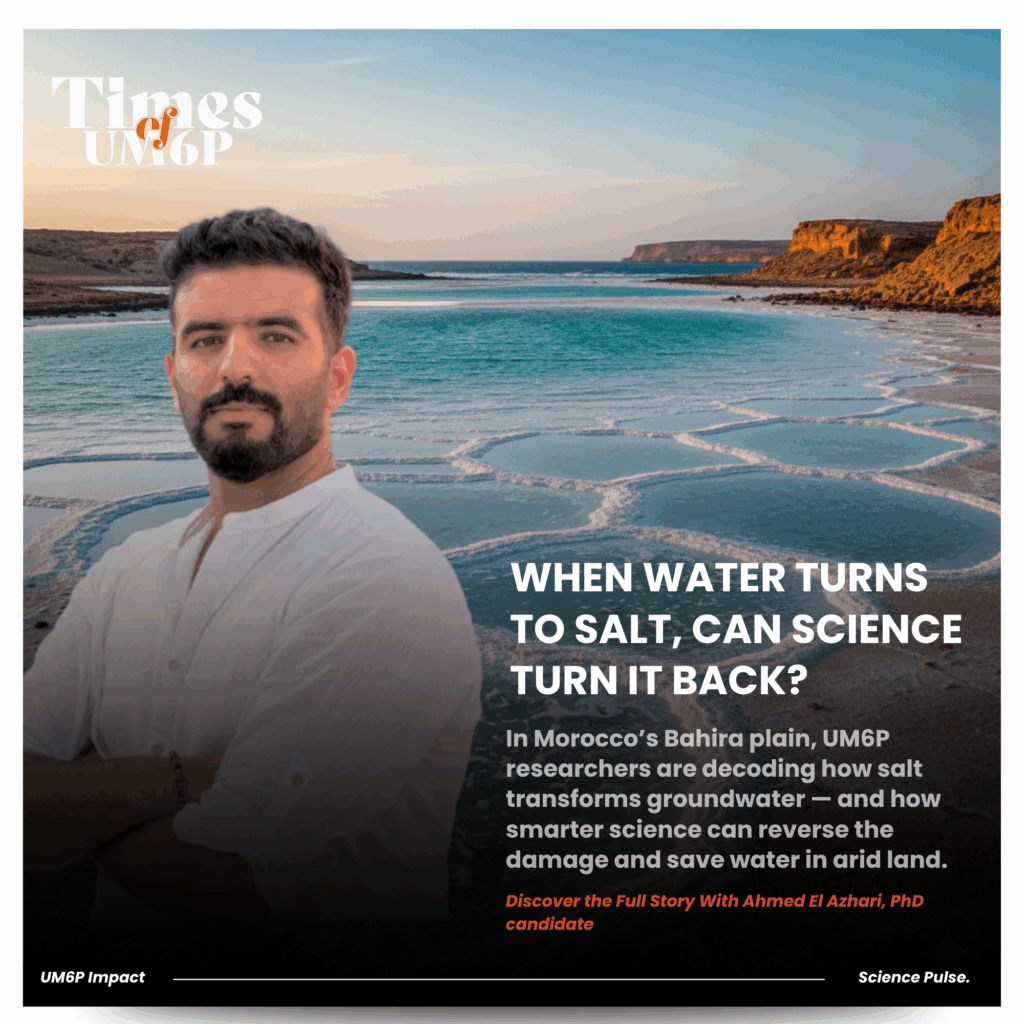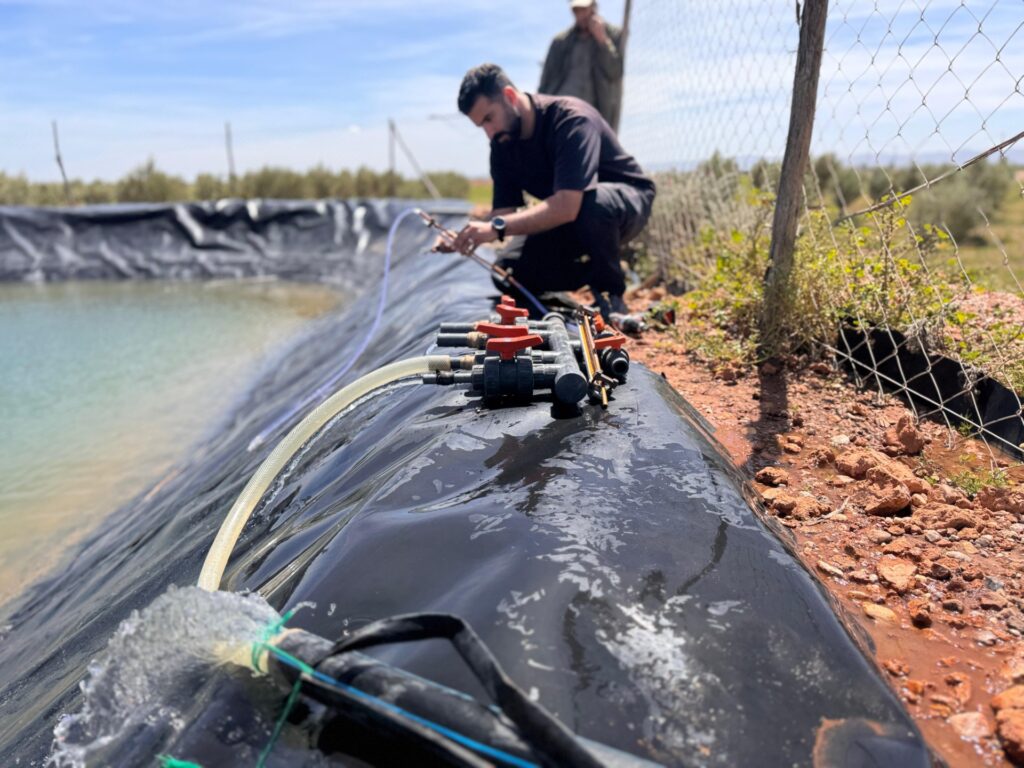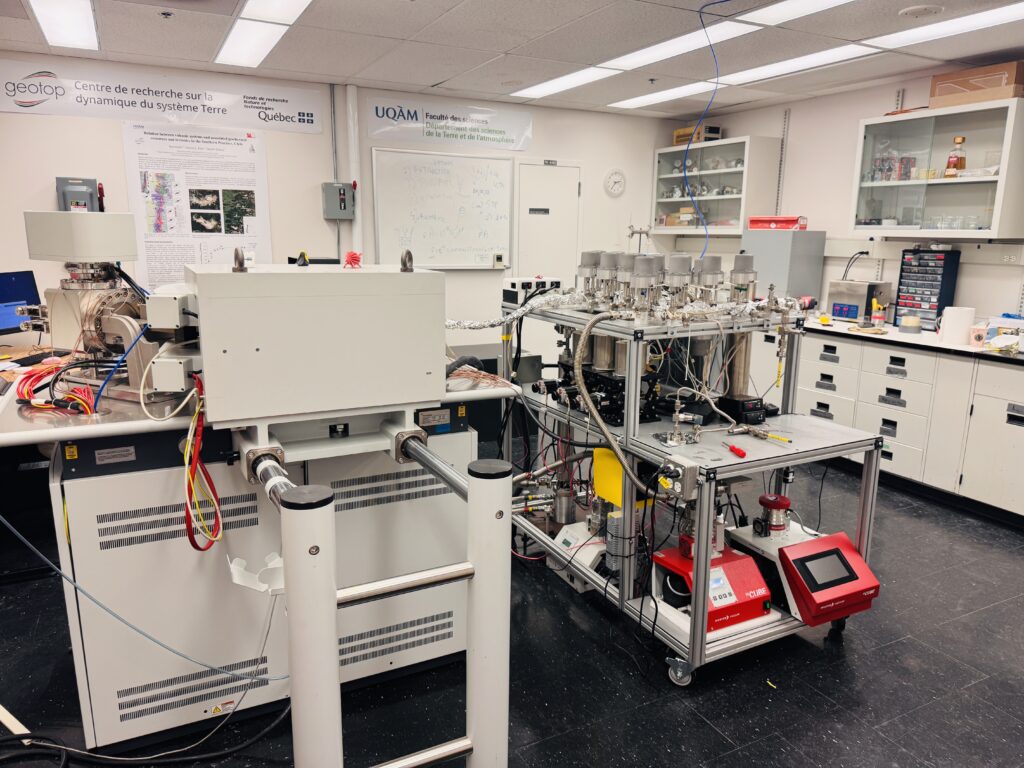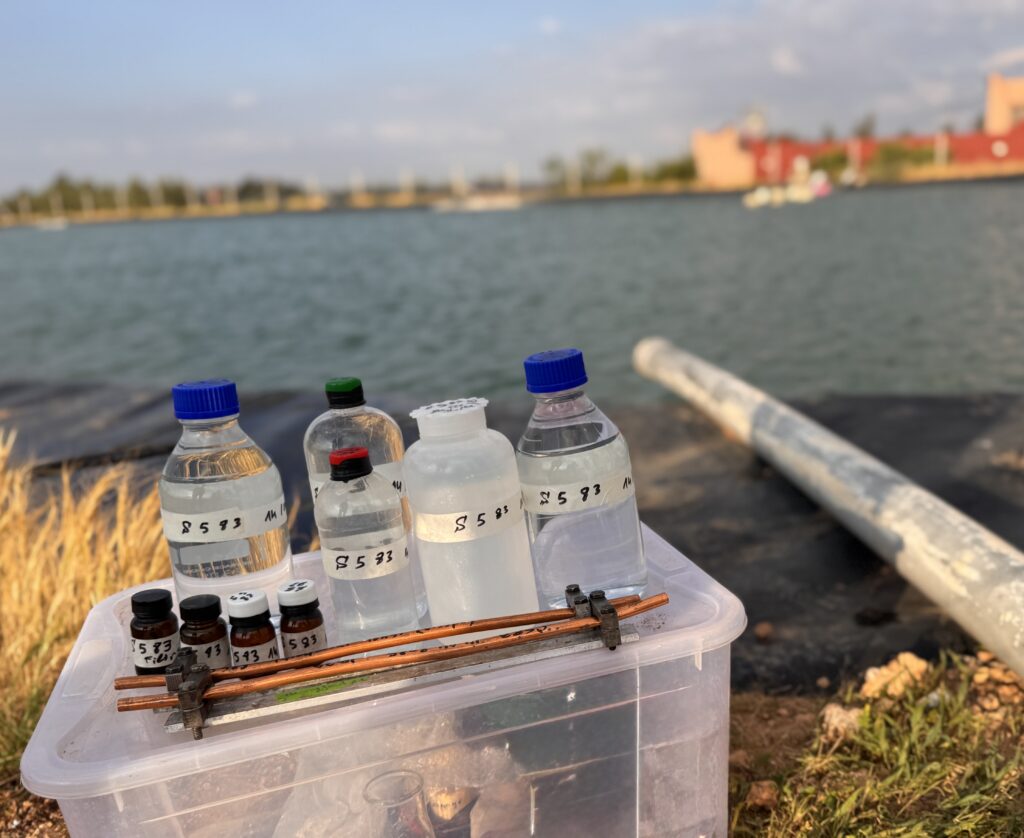When Water Turns to Salt, Can Science Turn It Back? A UM6P PhD Candidate Is Finding Out
Water scarcity is often measured in litres lost. But in Morocco’s Bahira plain, the crisis is written in salt. Wells that once fed crops now yield brine strong enough to pickle them. For most, it looks like a slow death of farmland. For Ahmed El Azhari, a PhD candidate at UM6P’s International Water Research Institute (IWRI), and his team, it is something else: a rare natural laboratory.

Ahmed El Azhari
Ph.D. candidate at UM6P’s International Water Research Institute in co-supervision with University of Quebec at Montreal (Canada). He specializes in groundwater quality assessment and salinisation using geochemical and isotopic tracers in combination with integrated hydrological modeling. With over five years of experience in water resources management, he has contributed to diverse groundwater and hydrological projects.
To grasp the challenge of water scarcity, consider the microsiemens, a unit that measures the electrical conductivity of water. The more salts are dissolved in it, the higher the reading. In the shallow aquifer beneath the Bahira plain, a farming region in central Morocco, that reading can soar to 66,100 microsiemens per centimetre. Fresh water has a reading of under 1,500. The water in the Bahira is, in places, effectively brine.
This is a slow-burning crisis. As the water table falls, what remains becomes ever saltier, threatening the agriculture it supports. But the Bahira is more than a local tragedy. It is a case study in the complex geology of thirst. Its fate holds lessons for other arid regions from California to China.
Now, the wells that nourish crops are yielding water with a rising salt content, a slow-motion threat to the region’s viability. But for researchers like Ahmed El Azhari and his team, Bahira is more than a problem; it’s a perfect laboratory.
The Bahira plain concentrates all the main drivers of groundwater salinization into one system, it’s an ideal case study for arid-zone water challenges worldwide.” — Ahmed El Azhari
The problem begins with the plain’s geography. It is an endorheic basin, which means that it is hydrologically landlocked. Like a bathtub with no drain, water that flows in can only leave by evaporation, leaving its dissolved salts behind. This natural predisposition to salinity is accelerated by the plain’s geology. Its aquifers are embedded with halite (rock salt) and gypsum, minerals that are happily soluble. Climate change, bringing lower rainfall and higher temperatures, tightens the screw.
Human activity has taken this natural vulnerability and turned it into a full-blown crisis. For decades, farmers have pumped groundwater to irrigate their fields. When they flood them, the water percolates back into the aquifer, laden with salts it has picked up from the soil and the rock below. This “return flow” acts as a concentrated brine, recycling and concentrating the salts with each cycle. The result is a perfect storm of salinisation.
Down the Tubes
El Azhari’s research, which won the 2025 OSPP Award from the European Geosciences Union, performs a chemical audit of the aquifer — a masterclass in hydro-forensics. The high levels of chloride and sodium point to the dissolution of halite. Sulphate betrays the presence of gypsum. But the story is more complex than simple dissolution. His models show active cation exchange, a process in which clay minerals in the aquifer swap the sodium in the water for calcium and magnesium on their surfaces. This can soften the water, but when the sodium-rich water is used for irrigation, it degrades the soil structure. Like a fingerprint, the ratio of heavier to lighter isotopes reveals the water’s history. In the shallow wells, the ratios show the unmistakable sign of strong evaporation. The water has, in effect, been pre-concentrated. The presence of nitrate is the smoking gun of agricultural fertilisers, directly linking farming practices to the aquifer’s poisoning. A stark divide exists between the shallow aquifer and deeper,
“Confined” ones, which are protected by layers of clay and rock. The shallow water is often hypersaline and heavily influenced by the surface. The deep water is fresher, its chemistry shaped by slower, more subtle reactions with carbonate rock. But it is not immune. The research suggests that faults, or poorly sealed boreholes that tap multiple layers, can create pathways for the shallow brine to poison the deeper reserves. This is a dire warning for the common strategy of “digging deeper” as aquifers fail. The most significant finding, however, may be one of management. Stable isotopes of oxygen and hydrogen in the water molecules provide a further clue.The standard approach to the groundwater crisis is to focus on volumes, balancing extraction with recharge. El Azhari’s work shows this is like a doctor measuring a patient’s blood volume while ignoring a dangerous infection. The problem is not just the quantity of water, but its changing chemistry.

The Circular Economy of Salt

The lesson for the Bahira plain—and for many regions like it—is that the linear model of water use is a fantasy in a closed basin. Water cannot be used and forgotten. There is no “away.” Every action is circular; every grain of salt is accounted for. The choices made on a farm—the irrigation technique, the fertilizer used—directly shape the chemistry of the well from which it draws its water. Solutions, therefore, must be equally precise. Shallow zones, dominated by return flow, need a shift to drip irrigation to minimize percolation. Deeper aquifers need protection: regulations on well depth and proper sealing to act as a buffer against the creeping salt.
This requires a move from blanket extraction quotas to spatially explicit management based on an understanding of subsurface processes. Globally, about 20% of irrigated land is affected by salinity, with some estimates as high as 50%, a figure set to grow as the climate changes. The Bahira plain, in its distress, has drawn a line in the sand. It shows that the battle for water security in the 21st century will not be won by simply digging more holes or moving more water. It will be won by understanding and managing the intricate, circular chemistry of the earth itself. The well-being of millions depends on learning this lesson before the water turns to salt.

Want to dive more ?

Leave a Reply